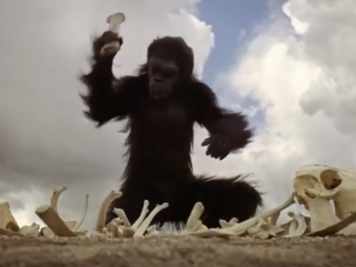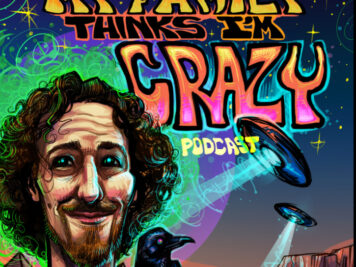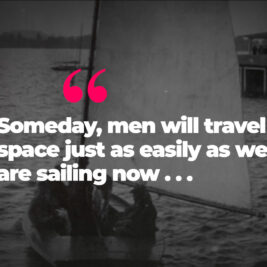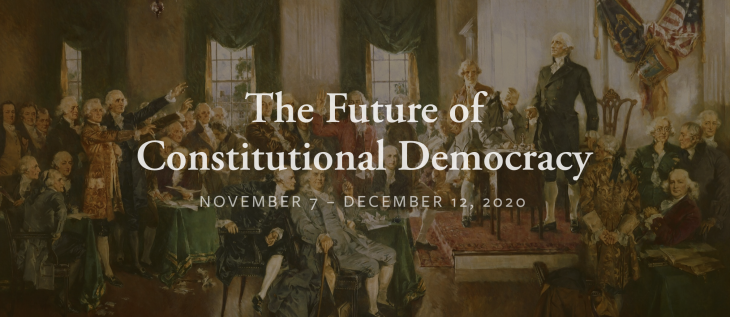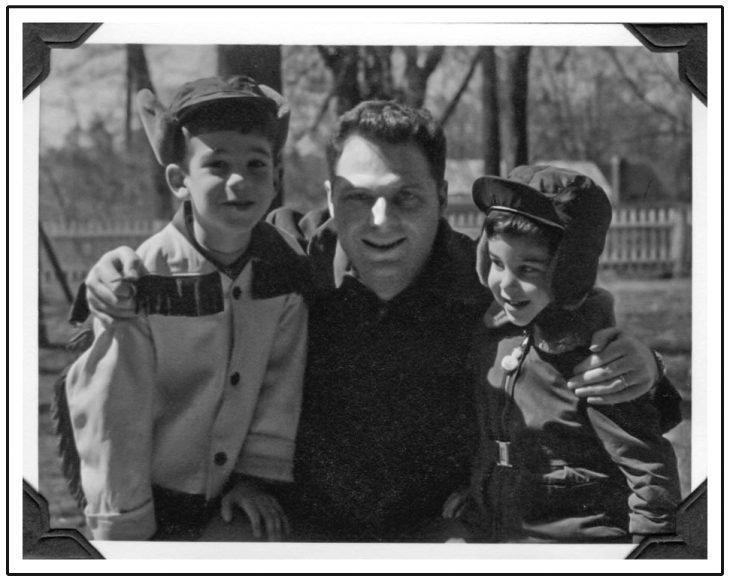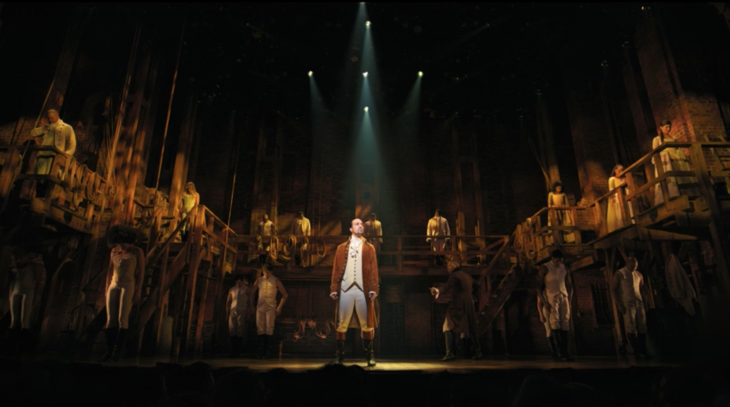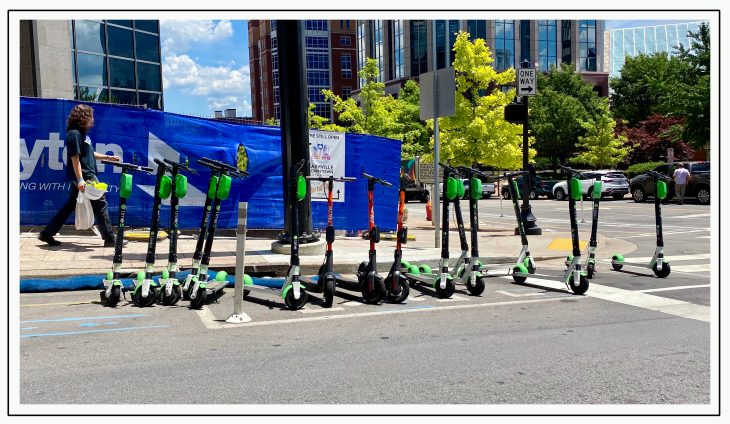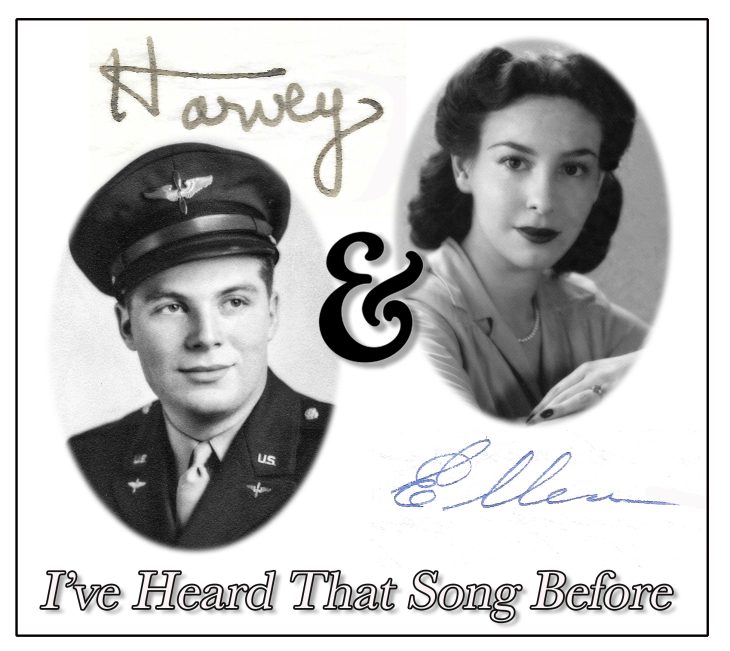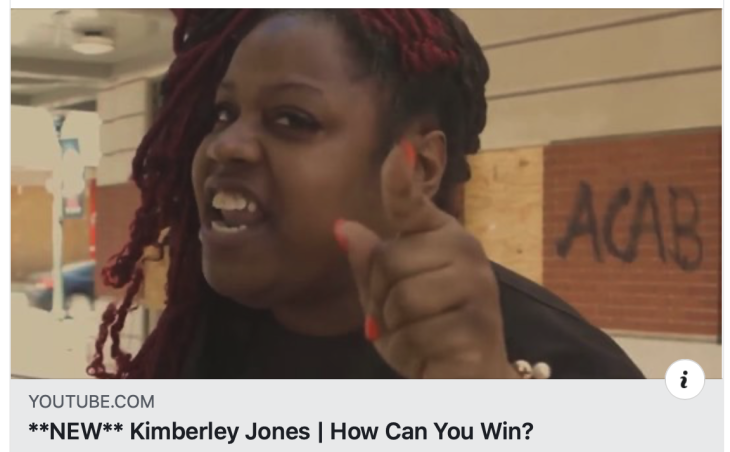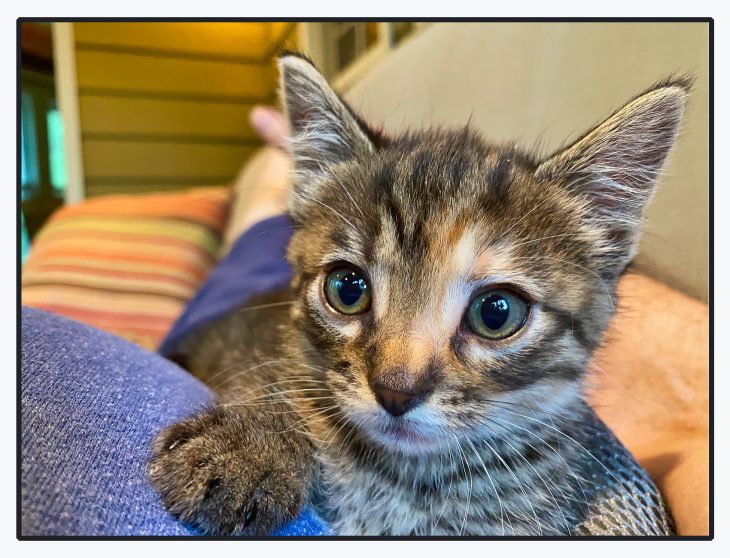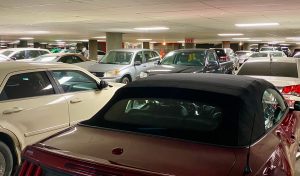It’s been a few weeks now since a mob of fugitives from reality staged their clown-show coup attempt on the Capitol.
In the weeks since, millions, probably billions, possibly trillions of words have flashed across digital screens to assess the damage.
Here now are my two-cents worth of pith in that vast ocean of virtual verbiage.
Cent The First: In which I offer some high-altitude observations about technology and the way our brains process information in an attempt to make the case that America doesn’t have a political problem – it has a mental health problem. The ‘net effect’ (pun intended) of all this new technology is a raging, widespread – dare I say, pandemic? – case of undiagnosed #BrainDamage.
Cent The Second: I keep coming back to an historical analogy that struck a few days after the siege at the Capitol. I’ll get to that near the end. Bear with me, this is a long one…
1. #TMITM
Peer with me now into the verbal kaleidoscope through which I have viewed all things since roughly 1968, when I first encountered the work of a certain Marshall McLuhan, who wrote in 1964 that “the medium is the message” (#TMITM).

Marshall McLuhan
(1911-1980
That expression gets tossed around a lot, but it’s not clear that any of the pundits who do the tossing really know what it means, so herewith a simple explanation from the pen of the master himself:
“Societies have always been shaped more by the nature of the media by which men communicate than by the content of the communication.”
–– Marshall McLuhan,
The Medium is the Massage, 1967
Writing at the peak of the broadcast era in the mid 1960s, McLuhan described the impact of electric communications on a world that until that point had evolved around print media:
After three thousand years of explosion, by means of fragmentary and mechanical technologies, the Western World is imploding… Today, after more than a century of electric technology, we have extended our central nervous system itself in a global embrace…
…which extension, McLuhan coined further, led our arrival at the outskirts of a ‘Global Village.’
Fast forward to the 21st Century. What would Marshall McLuhan make of the Internet? We cannot know, because McLuhan died in 1980 – about the time I first went online with a 300baud modem, dialing up a service called ‘The Source‘ (and later Compuserve). That was 13 years before I first learned of the actual Internet: In the late fall of 1993, I discovered Listserves and User Groups. The first Netscape web browser arrived about a year later.
Absent McLuhan’s mystic oracle, it falls to a new generation of witnesses to adapt his theories to these new media, networks, and devices.
In the introduction to his 2010 (think MySpace…) book – The Shallows: What The Internet Is Doing To Our Brains (hell, just the title oughta be some kind of clue) – author Nicholas Carr picks up the torch that McLuhan set down when he moved on to that great media lab in the sky. Carr combs through the dense, often opaque verbiage of McLuhan’s seminal works from a half-century earlier to distill the pertinent elements for the digital era:
“McLuhan understood that whenever a new medium comes along, people naturally get caught up in…the “content.” The technology disappears behind whatever flows through it – facts, entertainment, instructions, conversation…
“Our focus on a medium’s content can blind us to [its] deep effects. We’re too busy being dazzled or disturbed by the programming to notice what’s going on inside our heads…
“The effects of technology do not occur at the level of opinions or concepts,” McLuhan wrote. Rather, they alter “patterns of perception steadily and without resistance…”
(italicized emphases added)
In other words,
“Media work their magic – or their mischief – on the nervous system itself…”
To underscore that point, consider this (only slightly) over-simplified illustration of how a brain on paper pages differs from a brain on digital ‘pages’:
As you read these words on a screen, does it occur to you that the characters, sentences and paragraphs you see are not really ‘there’?
When you read a book or a newspaper, you are reading solid characters inked onto a fixed surface.The letters are permanently imprinted.They are ‘there.’
Now consider for a moment how a movie works. What the brain interprets as ‘moving pictures’ is based on a phenomenon called “persistence of vision” – each frame of the projection remains impressed upon the retina when the next frame appears a fraction of a second later, creating the illusion of motion in the brain.
Persistence of vision is at work when you read text from a screen. Printed words and images exist outside the brain; digital words and images exist only inside the brain. On a computer, smartphone or tablet display, the characters you read are painted in pixel fragments before your eyes; the characters don’t really exist until your brain assembles the pixels into what you think you see. Compared to reading printed text, the brain is working very differently, lulled into the illusion that it is reading ‘text.’1 The brain circuity is effectively re-wired to recreate the experience of reading printed text. Therein lie the origins of America’s mental health crisis.
Returning to The Shallows, Nicholas Carr concludes,
[We miss] what McLuhan saw: that in the long run a medium’s content matters less than the medium itself in influencing how we think and act.”
By now, how we act is fairly obvious: we’re staring at shiny glass objects in our hands all day, massaging them with our thumbs in an infinite quest for both tactile and psychic gratification.We can’t so much as stop at a red light without at least feeling the impulse to reach for your gizmo.Got any new email? New likes? What’s that sound?Oh, the guy behind is me honking cuz the light’s turned green…
All of that is in the realms of what we think. How we think is less obvious – until an event like January 6th seizes our collective attention with a mind-altering what. the. fuck?
It should be equally obvious by now that ‘what the fuck?’ is really pretty simple.
It’s the Internet, stupid.
All this new technology has ripped a galactic tear in the fabric of our information universe and torn loose the underpinnings of the political and economic foundations of society. We witnessed the culmination of all that disruption in the halls of Congress on January 6th .
Where McLuhan was writing in 1964 of a cultural ‘implosion’, we must now assert a new, opposite conclusion: Over the past fifteen or twenty years, that implosion has reached a critical mass and has reversed course, exploding in a universe-altering Big Bang of cognitive dispersion and dissolution.
Think of that clown-car horde swarming the Capitol. Then return to McLuhan describing television in 1964, like a barbarian order:
“The electric technology is within the gates, and we are numb, deaf, and blind about its encounter with the Gutenberg technology, on which and through which the American way of life was formed.”
Translation: Our Constitution was drafted as a compromise between large states and small, slave-holding and free. But that was just the ‘content’ of the time; the dominant medium of the era was print. The Constitution was cobbled together in much the same way that a printed page was assembled in the 18th century – at a time when the fastest information could travel was the speed of a galloping horse (“the Redcoats are coming!“). It’s a genuine marvel that it has lasted this long, more than a hundred years after information started to travel at the speed of light.
Imagine Marshall McLuhan writing fifty years later, in 2014 – two years before Twitter and 24- hours cable news produced Donald Trump.

21st Century Barbarians, armed with cell phone cameras
Barbarians at the gates, indeed. They are everywhere. There is no longer a single point of origin, like a newspaper printer or a radio or television station. Now the points of origin have reached parity with the points or reception. Everybody who has a laptop, a tablet, or a smart phone is a printer and a broadcaster.
What humanity is undergoing now is nothing less than a complete reversal of the cultural trajectory of the past five hundred years, mandated by the fragmentation bomb of digital technologies.
There are no gatekeepers.
Hell, there aren’t even any gates.
No wonder it was so easy for a mob of digital Visigoths to storm the ramparts of Congress.
*
2. #BrainDamage

the blue -> red political spectrum as a mental health assessment; on the left, a healthy, normal (blue) brain, on the right a diseased (red) brain
From the first ape with a thigh bone to the first nerd with a slide rule, cultural evolution has followed technological disruption.
If you can entertain the premise that the advent print in the 15th Century produced the Reformation (Bibles for everyone!) and The Enlightenment (Principia for everyone! Shakespeare for everyone else!), then you may begin to appreciate how the advent of digital communications has produced the chaos that we seem to be living through now.
Starting in the mid 1990s, when personal computers became common household appliances and we all got charmed by the chime of “You’ve Got Mail!”, to the early ‘aughts when broadband delivered the Celestial Jukebox into our pockets and purses, with all the collected knowledge of human history at our disposal with a couple of finger taps, that was enough to alter the way even the soundest of brains work. Most brains are not so sound.
Per McLuhan: The way information is organized, disseminated and gathered affects the way it is processed in our brains – and therein lies the root of our current dilemma: the Internet has rewired our brains, and a not-small percentage of humanity has gone from their brains being ‘rewired’ to actual #BrainDamage. What else can you call the widespread inability to distinguish between that which is real and true and that which is fabricated and conspiratorial?
In the third decade of the 21st Century, America is not suffering from a political divide; it is suffering from a mental health crisis.What is perceived as a political divide is not between left -v- right, it’s between the #BrainDamagedand the nominally functional who can still wrestle effectively with the vestiges of the Enlightenment: science, reason, and some grasp of objective facts.
In a recent episode of his podcast Another Way, the legal scholar Lawrence Lessig makes this straightforward observation:
“You can’t have a democratic republic if there is no foundation of shared truth.”
What the internet (and its older cousin, 24-hour cable news) has done is compromise the underpinnings of that foundation.The atomization of information has given every smartphone, tablet, and laptop user the ability to define their own reality – and more importantly, find at least some small cohort that will echo that vision.
I’m not a psychiatrist – I’m just playing on one the Internet – but it seems to me that the inability to process or live within the constraints of an objective reality would warrant a clinical diagnosis: schizophrenia2. I dunno, maybe there is a better DSM category for ‘unable to process reality.’ But how else would you describe a condition where otherwise seemingly functional people are suffering hallucinations of a free, fair, and certified election being ‘stolen’?
The mass delusion started settling in on January 20, 2017, when newly inaugurated President of the United States Donald J. Trump invoked the catchwords that will be carved onto the tombstone of his four years in that office: “American Carnage.”
But the real destruction – to the “foundations of shared truth” – did not begin until the following Sunday, when Kellyanne Conway went on Meet the Press and inaugurated the Era of Alternative Facts – at which point the Lawrence Lessigs of the world became headless statues, relics from a vaguely recalled, ancient past.
The content here is ‘alternative facts’; the message is, ‘you can’t have alternative facts without a media environment comprised of infinite sources and echo-chambers.’
Four years later, in his 2021 Inaugural address, Joe Biden spoke of “this uncivil war” – an oblique allusion to the rhetorical excesses of the previous four years.With that prompt, and for the sake of argument, let’s see how even a ‘shared foundation of truth’ can lead to a real Civil War:
America’s Civil War was the unfathomable penance the country was forced to pay for the absolution of its Original Sin. There was a deep and long-standing disagreement over the moral propriety of the ‘peculiar institution’ of slavery: Advocates from the South, like Kentucky Senator Henry Clay or Confederate Vice President Alexander Stevens could argue that the enslavement of humans from another continent was morally justifiable; abolitionists in the North considered the whole idea morally repugnant, degenerate and evil.But nobody denied that slavery in America existed. Nobody from the South had the temerity to say that slavery did not exist on the cotton and tobacco plantations.However objectionable, there was a ‘foundation of shared truth’ in the obvious, odious fact. The opinions around that factwere sufficiently entrenched on either side of the Mason Dixon line that the bloodiest war in American history was all it took to finally decide the issue.
That’s an example of struggling for the moral center of the Republic over a generally accepted fact – and going to war over the attendant difference of opinion.

NY Senator Daniel Moynihan, furtively arguing against “alternative facts.”
The trouble is, facts are not so agreeable in the 21st Century as they were in the 19th. The late Senator from New York, Daniel Patrick Moynihan said, “everybody is entitled to their own opinion, but not their own facts.” I haven’t spoken to Senator Moynihan – he’s been dead for almost 20 years – so I think it’s safe to say that he is glad he did not live long enough to encounter the psychic carnage of ‘alternative facts’ and the mental instabilities of QAnon.
In November 2020, there was an election.The votes were counted.More than 60 court cases in countless different jurisdictions determined that the results of the count were free and fair, and allegations of widespread voter fraud and a ‘stolen’ outcome were universally dismissed.
But not so fast if you live in your own Internet-generated reality. Despite all the evidence, the forces of opposition cannot even agree that the conclusion is a certifiable, reliable, acceptable fact. Allegations of impropriety persisted despite their demonstrable falsehood. I contend that what we are witnessing is the message in the medium – in the form of digitally-induced brain damage.
I also think we have seen the worst of it. The fever dream is breaking.
*
3. #TheHighWaterMark

The monument on Cemetery Ridge marking ‘The High Water Mark of the Confederacy’
Finally, I have arrived at the history lesson that was the genesis of this entire screed. Sometime shortly after the Spectacle in the Capitol, the expression “high water mark” began bubbling in my brain.
This is something I learned during the Civil War Sesquicentennial through my work with The 1861 Project.
Pickett’s Charge was the final Confederate offensive at the Battle of Gettysburg on July 3, 1863. Robert E. Lee’s Army of Northern Virginia was already on its heels after falling short over the previous two days, but Lee decided to launch one more daring assault.
Lee ordered General George Pickett to advance his division across a mile of open field toward a Federal entrenchment on a rise appropriately enough called Cemetery Ridge.Despite monumental losses at the hands of Federal forces firing down on the advancing Confederates,the surviving element of Pickett’s division managed to reach the top of the ridge and briefly penetrate the Federal defenses.
Had that penetration held, had the Confederate forces prevailed on that day, then Lee and what was left of his Army might have been able to achieve their ultimate objective – advancing another 80 miles south to take the Capital at Washington, DC and end the War with a Union surrender.
But the Federal forces rallied, closed the breach in their line, and forced the Confederate Army back down the ridge.
That was the closest the Confederacy ever got to winning the Civil War. There is a monument that marks the spot where the Pickett’s Charge broke through as “The High Water of the Confederacy.”
Despite the Union victory at Gettysburg, the Civil War ground on for another brutal year and a half before Lee finally surrendered to Grant at Appomattox in April, 1865.

Stephen Lang as Gen. G. Pickett in “Gettysburg.” Lee: “General Pickett, you must look to your division!” Pickett: “General Lee, I have NO DIVISION!”
That image of Pickett’s Charge (which I am probably seeing in my mind’s eye from the 1993 movie ‘Gettysburg‘), is what comes to mind when I watch footage of the Capitol siege.
The element that stormed the Capitol that day were the victims of a con, susceptible by virtue of the #BrainDamage they have suffered from the disorienting effects of digital technologies.
And while there are still voices of derangement in Congress and elsewhere, those elements are now, finally, being pushed back to the fringe where the lunatics belong.
And I predict that someday in the not-too-distant-future we will look back on January 6, 2021 as “The HighwaterMark of The ConLunacy.”
The Federal Forces of Reason reassembled around an agreed upon foundation – beginning later that same day when Mitt Romney stood in the well of the United States Senate and declared of the fringe element: “we have to tell them the truth.”
At that moment, a long-absent concept was re-introduced into the political discourse: Lawrence Lessig’s ‘shared foundation of truth.’
Like a newborn infant, that concept struggles to survive. The forces of obsequious, sycophantic partisanship have not yet been driven entirely back into the intellectual swamp from whence they came.
Remember: although it took a year and half before Lee finally surrendered, the die was cast that bloody day in the summer of 1863.In much the same way that the forces of Union, democracy, and emancipation were not ultimately victorious until the spring 1865, the forces of reason and competence, science and data have been restored to the Federal government in 2021 – and will ultimately prevail in some near-if-unforeseeable future.
Some things are facts. Some things are fabrications.And even with the Internet (and all the gizmos that deliver it) undermining our print-engendered, Enlightenment-fostered processes of thought and reason, there is too much common sense in the world for an ideology based on fabrications to persist much longer.The tide has turned, the ConLunatics have been forced off the ridge, and ultimately, the Union of Common Sense and The Foundation of Shared Truth will reconstruct the Republic of Shared Truth.

Forget the elephant; this is the new symbol of the Republican party.
We are seeing the nascent signs of the return of reason, even as the media continue to focus on the bright, shiny insanity of people like Marjorie Taylor-Greene. The Kevin McCarthys and Lindsey Grahams of the world cannot help themselves. They live in the partisan confines of their own derangement. They cannot tell that their brains are broken, because they live inside them, like a fish does not know it swims in water. But there are a few – like Romney, like Adam Kinzinger or Liz Cheney, whose brains are not broken, who have managed to wade through the digital muck and arrive at a semblance of objective facts reality, and truth.
I am, for example, encouraged by one prominent conservative columnist who dares to wonder aloud , “Just How Nuts Is The Republican Party?”It’s about time somebody inside the tent started asking who’s pissing into it.
And there are indications that even the most deranged among us are capable of seeing the light, can repair their own #braindamage, and begin to put this Internet-induced mental-health crisis behind us.
*
4. #FutureSoBright

What were you doing when YOU were 22 years old??
There is still a lot of work to do.My God, there is a lot of work to do.
How much longer can we continue to be governed by (ageism alert!) septuagenarians (I get to say that because I are one) and octogenarians whose brains are more cognitively attuned to the workings of a rotary dial than a smartphone?
How much longer can the fate of the republic rest in the hands of one individual who presides over a legislative body where ten sparsely populated states have the same representation as one state with forty million people?
How much longer can we live in a republic where the chief executive can be elected with something other than a majority of the electorate?
And for God’s sake we have got to eradicate the notion that ‘corporations are people‘ and ‘money is speech’.
Something’s gotta give, so that we can return to the kind of governance where, when things are running well, we don’t have to think about it every waking minute of every day.
We should not have to worry about our national political structure; we should just go about our daily lives.

My favorite image from the inauguration: the first couples, holding hands like they mean it. (Doug Mills/The New York Times)
But when the entire nation is in the grip of a pandemic, then that political structure has got to unify around in a common objective without the interference of a delusional fringe caught in the grip of a mass hallucination.
Further, we Boomer types have got to pave the way for the next generations.
Beside the words “All men are created equal” and “We the People,” we must enshrine the words of Amanda Gorman: “We are striving to forge our union with purpose. To compose a country committed to all cultures, colors, characters, and conditions of man.”I’m sure that is a very different state of affairs than the republic of propertied white men that the Founders envisioned, but it is also the natural result of the trajectory they set in motion.
I am also encouraged by this recent commentary that surmises a peak in the swing of America’s pendulum, reaching the top of a forty-year cycle that started with the ascendance of Reagan conservatism (and the long since-discredited ‘voodoo economics’) in 1980. The pendulum is beginning to swing back, into a 21st Century embodiment of the sort of collective purpose that the country experienced beginning with the election of Franklin Roosevelt in 1932.
After four very dark and strange years, we have finally emerged into the proverbial light at the end of the tunnel. The light is dim now, there are still shadows from the darkness, but the worst of the darkness is behind us, and the arc of history bends again toward justice.
It may be summer or fall before the light shines brightly, but once the pandemic is behind us, 2022 could be the start of another Roaring 20s. Only this time without the Prohibition.Too bad I don’t drink.
In addition to this viral pandemic, maybe by then we’ll have found a way of treating our nationalmental illness pandemic as well, and we can begin to welcome the digitally deranged back from the fringe. The deliverance of a prosperous and healthy nation will make it that much harder for a fringe element to gain the sort or traction this period of chaos has provided.
 It’s really not like a grizzled curmudgeon like me to express that degree of optimism.
It’s really not like a grizzled curmudgeon like me to express that degree of optimism.
But… there it is.
Where are my shades?
– – – – – – – – – – – – –
This clip depicts the climactic moments of Picketts Charge from the 1993 film Gettysburg – the only Civil War movie ever filmed at the actual location. Click here for a playlist of the entire sequence of scenes from the film.
– – – – – – – – – –
Footnotes:
1: I’ve gotten push-back on this line of thinking in the past.Here’s my push-back push-back:When you put a newspaper down, set it aside, are the letters and words still on the page?When you close your laptop, or put your tablet aside, are the characters stillon the screen?No?I rest my case.
2: There may be a more accurate term for the condition exhibited by the Delusional Branch of the Republican Party.Maybe it’s just dementia.Like said, I’m not a psychiatrist, I just play one on the Internet.Your mileage may vary.


